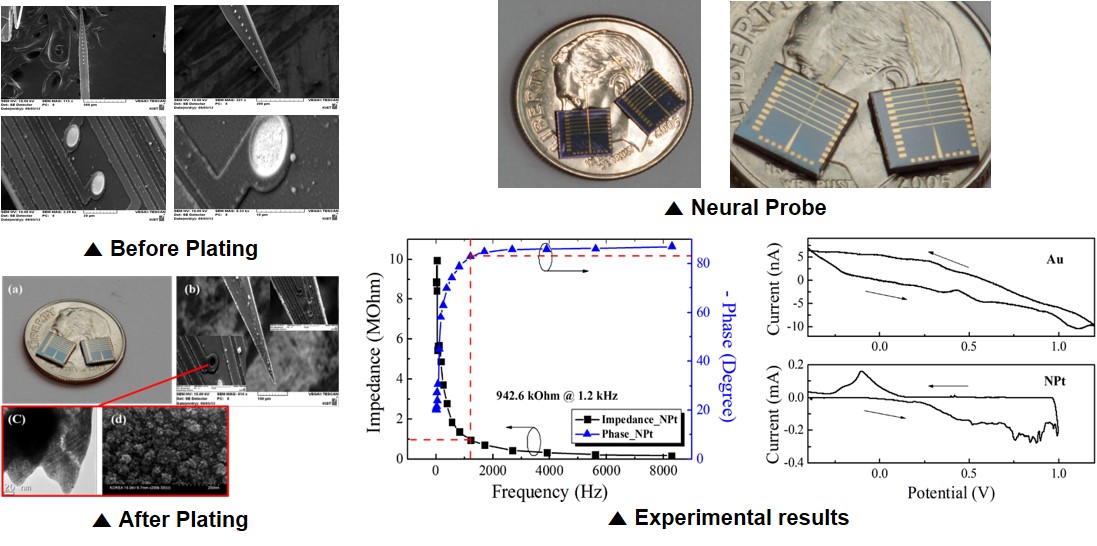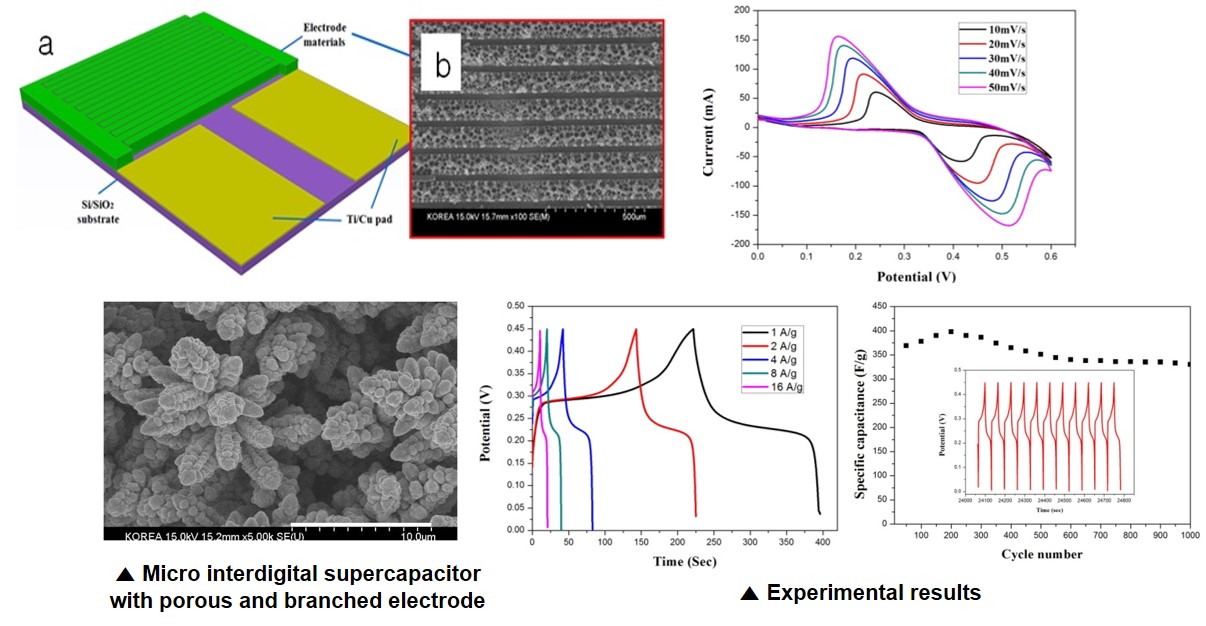In Bio MEMS, our research is highly focused on developing biosensors including cancer sensors, heavy metal detection sensors, enzymatic and nonenzymatic sensors by synthesizing different 2D materials like graphene/laser induced graphene, MXene, and Black Phosphorus. We also focused on flexible and wearable electronics, energy storage devices, and electrophysiological sensors for in-vivo and in-vitro detection.
Urine Glucose Sensor
A micro-fabricated non-enzymatic urine glucose sensor was newly developed and characterized by using Nafion coated nanoporous Pt composite electrodes for u-health care applications. In order to detect urine glucose effectively, thin layer of Nafion film was coated on all the surface of nanoporous Pt electrode for anti-protein-fouling. It also showed extremely stable and fast response to the urine glucose without any adsorption on the surface of sensor.

Flexible Glucose Sensor
Flexible enzyme free glucose micro-sensor with nanoporous Pt (Platinum) working electrode on a bio-compatible PET (Polyethylene Terephthalate) film was designed, fabricated, and characterized for continuous monitoring applications. The electrode surface RF (roughness factor) was much higher than that of the sensor with sputtered Au electrode. The fabricated sensor exhibited high sensitivity without affecting inferring species in wide range of glucose concentrations. It also exhibited low detection limit, and highly stable recovery characteristic. Flexibility, bio-compatibility, and enzyme free characteristic of the fabricated sensor are strong advantages for continuous glucose monitoring applications.

Silicon Neural Probe
A bulk micromachined silicon neural probe with electroplated nanoporous Pt (NPt) electrodes was newly fabricated and characterized to reduce the interfacial impedance of microelectrodes which are highly desirable for neural signal recording and stimulation. The highly roughened NPt film was electroplated on top of circular shaped gold electrode formed on the silicon neural probe. The newly fabricated neural probe exhibited extremely low impedance and specific capacitance at 1.2 kHz, respectively.

Electrochemical Supercapacitor
A three dimensional micro interdigital supercapacitor was designed and fabricated using MEMS technology. Micro porous and branched copper/nickel oxide composite were developed as active electrode material using electroplating and chemical oxidation processes. During the electroplating process, the negative photoresist KMPR was patterned and acted as the electroplating mold to achieve high aspect ratio electrodes. The novel structure of the as-fabricated composite can achieve higher surface area and result in a higher specific capacitance for the supercapcitor device.

